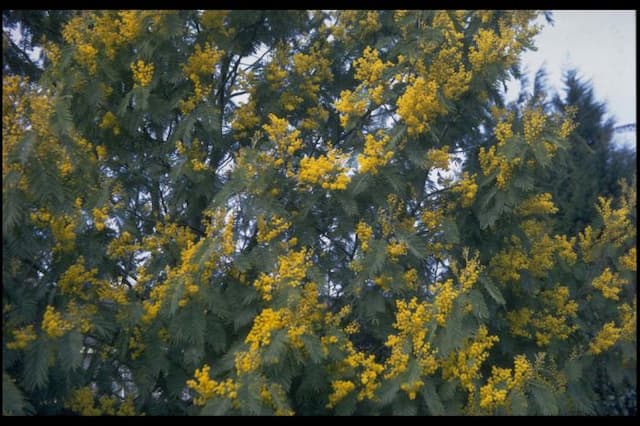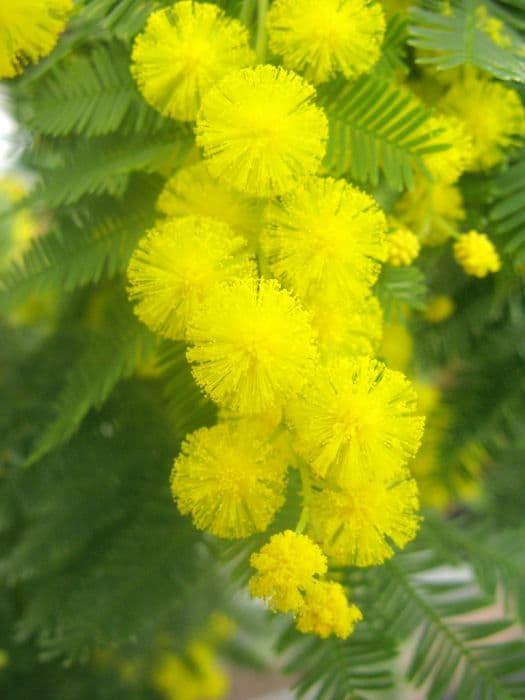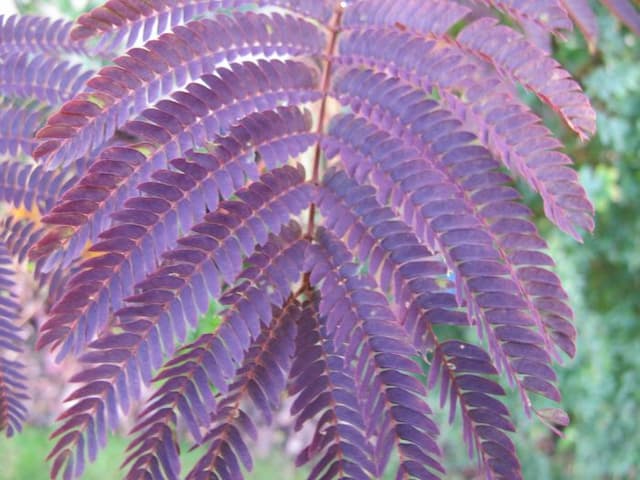Sweet pea Lathyrus odoratus 'Madison'

ABOUT
Lathyrus odoratus 'Madison', commonly known as sweet pea 'Madison', is a flowering plant which displays an array of delicate, vibrant flowers. The blooms of 'Madison' exhibit a rich and striking color spectrum, with shades that can range from deep purple to a gentle lavender, often adorned with a silken sheen. These blooms are characterized by their intricate, ruffled petals which add to their overall aesthetic of classic elegance. The flowers' structure is typical of sweet peas, with each flower consisting of a standard, or a large, domed upper petal, wings which are the side petals, and a keel, which is the lower fused petals that encase the plant's reproductive parts. The aromatic flowers give off a sweet, heady fragrance that is highly prized and can infuse the air with their perfumed scent, a feature that makes the sweet pea 'Madison' especially beloved by gardeners and floral enthusiasts. The olfactory presence of these flowers makes them a desirable choice for bouquets and scented gardens. The plant itself produces an inviting habitat for beneficial insects, particularly for pollinators such as bees and butterflies, which are attracted by both the flowers' color and fragrance. The stems of sweet pea 'Madison' are slender and green, often twining and climbing, equipped with tendrils that allow them to grasp onto supports and structures. The foliage consists of bright green leaves, which are generally pinnate, with multiple leaflets on each leaf, although the exact number can vary. The combination of striking flowers, sweet fragrance, and elegant foliage contributes to the sweet pea 'Madison' being a popular choice for ornamental purposes in a variety of garden settings.
About this plant
 Names
NamesSynonyms
Sweet Pea, Everlasting Pea, Perennial Pea, Sweetpea.
Common names
Lathyrus odoratus 'Madison'.
 Characteristics
CharacteristicsLife cycle
Annuals
Foliage type
Deciduous
Color of leaves
Green
Flower color
Varies
Height
6 feet (1.83 meters)
Spread
1 foot (0.30 meters)
Plant type
Climber
Hardiness zones
2
Native area
Mediterranean
Benefits
 General Benefits
General Benefits- Aesthetic Appeal: Lathyrus odoratus 'Madison', also known as Sweet Pea, bears beautiful, fragrant flowers that enhance the visual appeal of gardens and landscapes.
- Variety of Colors: Sweet Peas come in a wide array of colors, which allows for striking color combinations in floral designs and garden planting schemes.
- Cut Flowers: The blooms are suitable for cut flower arrangements, providing a fresh and fragrant option for bouquets and indoor displays.
- Pollinator Attraction: Sweet Peas can attract bees, butterflies, and other pollinators to the garden, supporting local ecosystems.
- Vertical Gardening: As a climbing plant, Sweet Peas are ideal for vertical gardening, which can save space and add dimension to small and urban gardens.
- Seasonal Interest: Sweet Peas have a specific flowering season, typically in the cooler months, giving gardens a burst of color when many other plants are not in bloom.
- Easy to Grow: They are relatively easy to cultivate, making them suitable for gardeners of all skill levels, including beginners.
- Therapeutic Gardening: The process of planting and caring for Sweet Peas can be a relaxing and rewarding experience, often considered beneficial for mental well-being.
- Educational Plant: Gardening with Sweet Peas can be educational, offering opportunities to learn about plant biology, life cycles, and gardening techniques.
- Companion Planting: Sweet Peas can be used in companion planting to help protect and enhance the growth of other plants in the garden.
 Medical Properties
Medical PropertiesThis plant is not used for medical purposes.
 Air-purifying Qualities
Air-purifying QualitiesThis plant is not specifically known for air purifying qualities.
 Other Uses
Other Uses- Lathyrus odoratus 'Madison', commonly known as sweet pea, can be used in dye production, where the flowers provide shades of blue and purple for natural fabric dyes.
- The vines of sweet pea can be woven into small decorative baskets or wreaths when dried, giving a rustic touch to home decor.
- Sweet pea plants are sometimes used in educational settings to demonstrate principles of plant biology and genetics due to their diversity in color and relatively easy breeding.
- The long, flexible stems of sweet pea can be used in arts and crafts for constructing intricate models or frameworks for small sculptures.
- Dried sweet pea flowers are incorporated into potpourri blends for their pleasant fragrance and colorful appearance.
- Sweet pea flowers can serve as a natural source of nectar for beekeepers aiming to promote pollination in their gardens.
- In photography, vibrant sweet pea blooms are popular subjects for macro photography practice due to their intricate textures and colors.
- The hardened seeds of sweet pea, after they have been thoroughly dried, can be used to fill homemade musical shakers for children's toys or educational purposes.
- Sweet pea vines can act as a natural trellis for other climbing plants in the garden, providing structural support and enhancing garden design.
- Pressed sweet pea flowers can be used in the art of flower pressing to create bookmarks, greeting cards, or other delicate paper crafts.
Interesting Facts
 Feng Shui
Feng ShuiThe Sweet Pea is not used in Feng Shui practice.
 Zodiac Sign Compitability
Zodiac Sign CompitabilityThe Sweet Pea is not used in astrology practice.
 Plant Symbolism
Plant Symbolism- Blissful Pleasure: Sweet pea (Lathyrus odoratus 'Madison') symbolizes blissful pleasure because of its inviting and delicate fragrance, which gives joy to those who experience it.
- Goodbye or Departure: In the language of flowers, sweet pea can mean farewell or departure, as it was often used to convey a polite way to say goodbye.
- Thank You for a Lovely Time: The sweet pea is often associated with gratitude for a great time or enjoyable experience, used to express appreciation.
- Delicate or Blissful Pleasure: Reflecting its own delicate nature, the sweet pea can represent tenderness and the simple joys of life.
 Water
WaterSweet peas, like Lathyrus odoratus 'Madison', should be watered deeply and infrequently to encourage deep root growth; this often means providing about 1 gallon of water per week, depending on your climate and soil drainage. During the growing season, check the soil moisture regularly and water when the top 1 inch of soil feels dry to the touch. In hot or windy weather, they may need more frequent watering. In cooler weather or if rainfall is adequate, reduce watering. Be careful not to overwater, as sweet peas are susceptible to root rot if the soil stays too wet.
 Light
LightSweet peas like Lathyrus odoratus 'Madison' require full sun to bloom well, which means they should receive at least 6 hours of direct sunlight daily. The best spot is one that gets morning sunlight and some protection from the intense heat of the afternoon sun, especially in hotter climates. Avoid planting in full shade as it will reduce flowering and can make the plant more susceptible to disease.
 Temperature
TemperatureSweet peas, including Lathyrus odoratus 'Madison', thrive in cool to moderate temperatures, ideally between 55°F and 65°F. They can tolerate a minimum temperature down to about 20°F for short periods and a maximum temperature of around 75°F, but prolonged exposure to heat will reduce flowering and may harm the plant. Sweet peas prefer cooler weather and often decline as summer temperatures rise.
 Pruning
PruningSweet peas, like Lathyrus odoratus 'Madison', should be pruned to encourage bushy growth and more blooms. Deadhead regularly by removing spent flowers before they form seed pods to promote continuous blooming. Lightly prune or pinch out the growing tips when plants are 4 to 6 inches tall to encourage side shoots. The best time for pruning is throughout the blooming period, from when the plant is young until it begins to decline in the heat.
 Cleaning
CleaningAs needed
 Soil
SoilSweet pea 'Madison' prefers well-draining, loamy soil enriched with organic matter. The best soil mix can include equal parts of garden soil, peat moss, and perlite or vermiculite. Adjust the soil pH to be slightly alkaline with a range between 7.0 to 7.5 for optimal growth.
 Repotting
RepottingSweet pea 'Madison' is an annual plant and typically does not require repotting as it completes its life cycle within one season. Plant seeds or seedlings directly into the garden each year.
 Humidity & Misting
Humidity & MistingSweet pea 'Madison' tolerates a wide range of humidity conditions but thrives best in moderate humidity. It is adaptable and does not require specific humidity adjustments in the garden.
 Suitable locations
Suitable locationsIndoor
Place in a sunny spot; ensure good air circulation for sweet pea 'Madison'.
Outdoor
Plant in a sunny location with support for climbing sweet pea 'Madison'.
Hardiness zone
5-9 USDA
 Life cycle
Life cycleThe life of the Sweet Pea 'Madison' begins with seed germination, which typically occurs in late winter or early spring when sown directly into well-draining soil with adequate sunlight. Following germination, seedlings emerge and enter the vegetative growth stage, developing a robust root system, climbing stems, and compound leaves. As the weather warms and daylight increases, the plant transitions into the flowering stage, producing fragrant, colorful blooms that attract pollinators. After pollination, the flowers transform into pods containing seeds, marking the reproductive stage. These seed pods mature, eventually drying and releasing seeds, thereby completing the cycle. Sweet Pea 'Madison' is typically grown as an annual, with its life cycle concluding by the first frost when the plant dies, although seeds can be collected for propagation in the following season.
 Propogation
PropogationPropogation time
Spring-Early Summer
The most popular method of propagating Sweet Pea 'Madison' is by sowing seeds. The best time to start seed propagation is in late winter or early spring. To maximize germination, seeds can be nicked with a knife or soaked in water for 24 hours before sowing. Plant the seeds about 1 inch deep (2.54 cm) in well-draining soil and space them roughly 2 to 3 inches apart (5 to 7.6 cm). Keep the soil moist but not waterlogged. Seedlings usually appear within 10 to 28 days, and it's important to provide support for the climbing stems as soon as growth is evident. Transplant the seedlings to their final growing positions once they are large enough to handle and after the danger of frost has passed.









